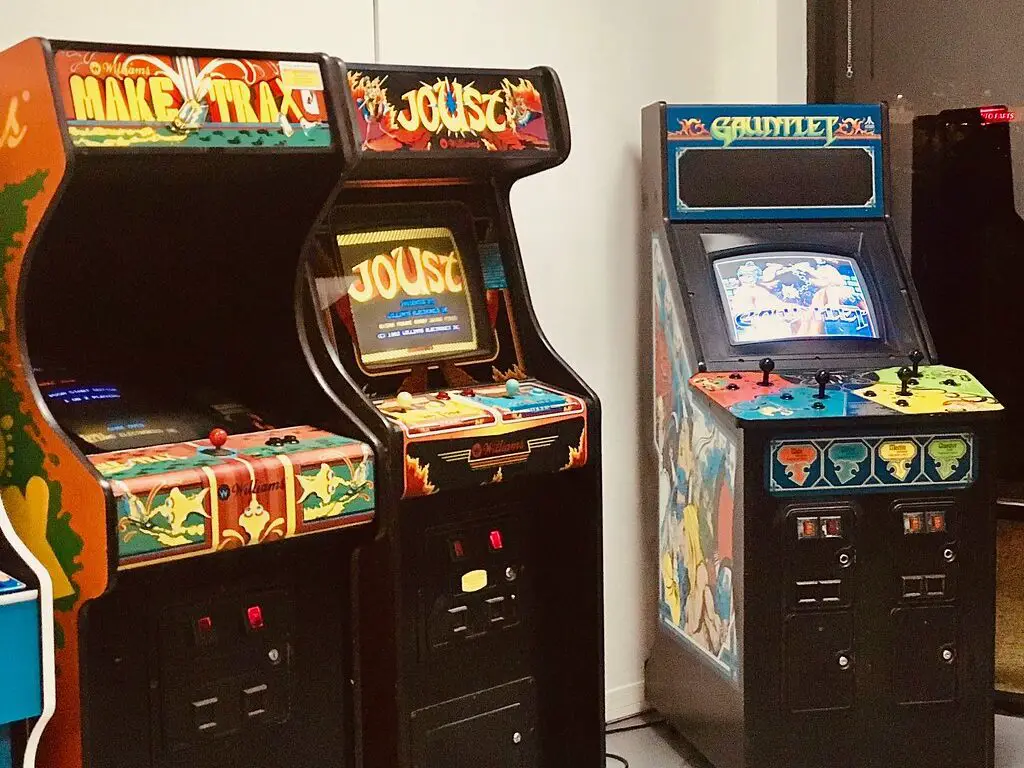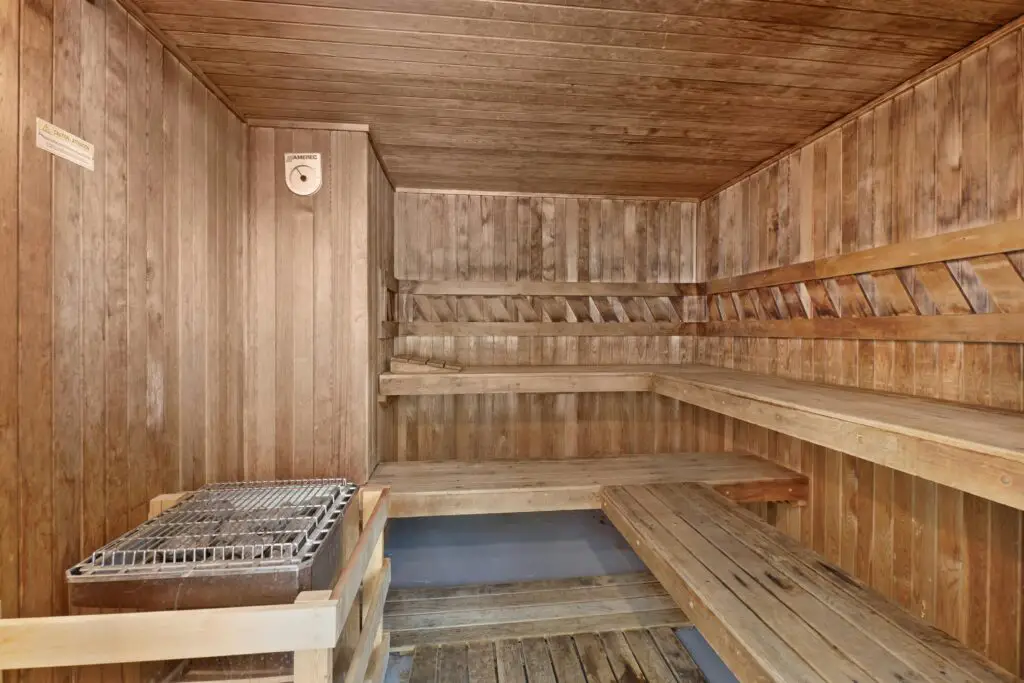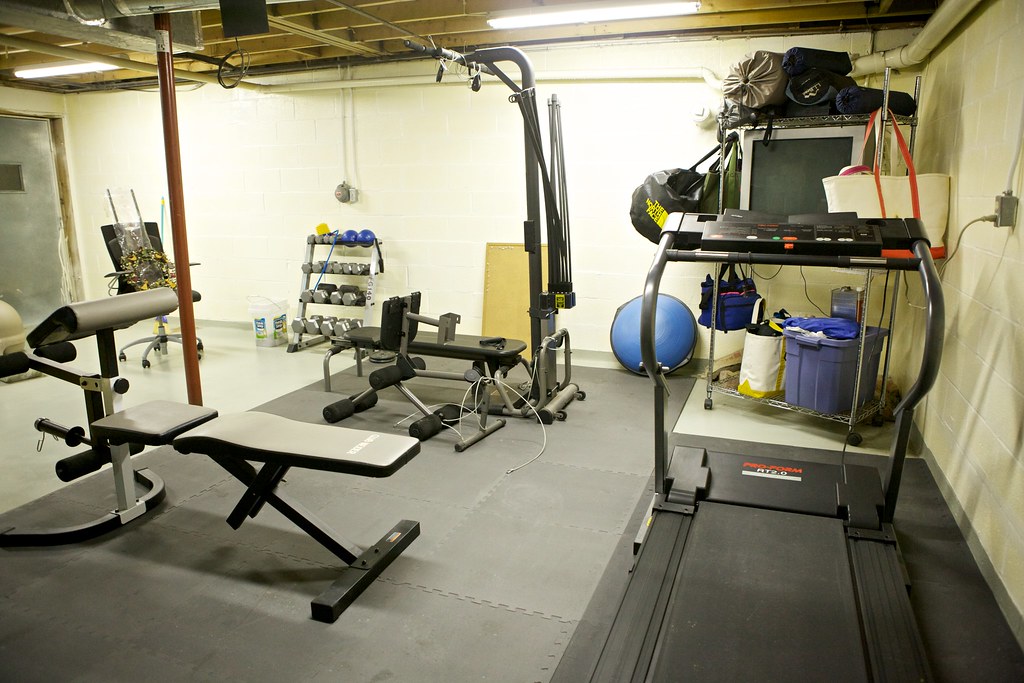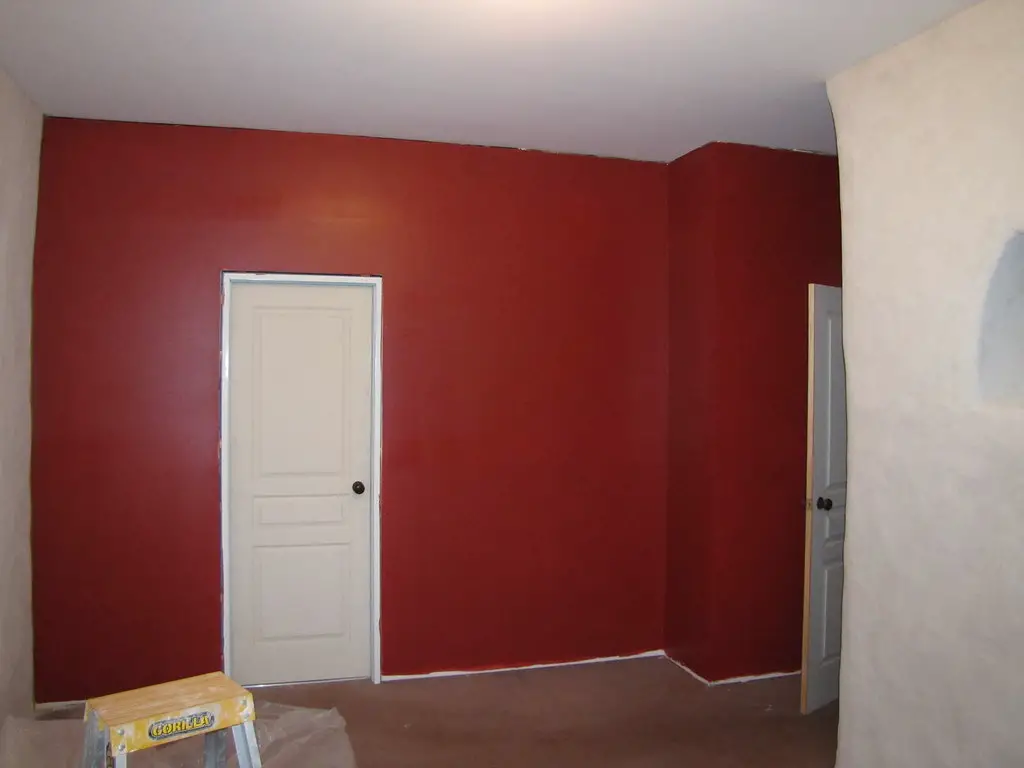1. Home Theaters

In the 1980s, the basement was often seen as the ultimate space for creating a home theater, complete with bulky VCRs and oversized speakers. Fast forward to 2025, and home theaters are making a huge comeback, but with a modern twist. Instead of bulky, outdated equipment, today’s home theaters feature sleek projectors, ultra-wide screens, and high-fidelity surround sound systems. Advanced speaker systems like Dolby Atmos create immersive audio experiences that were once only available in commercial cinemas. Smart home technology has also made it easier to control everything from lighting to sound with just a voice command or a tap on a phone.
According to Consumer Reports, the integration of smart home devices in entertainment spaces allows for a seamless viewing experience. These modern home theaters can also incorporate stylish recliners, mini-fridges, and popcorn machines, mimicking a full movie theater experience right in your own basement. While retro designs like neon lighting and vintage movie posters are making a return, the overall experience is vastly upgraded. With more homeowners seeking private entertainment spaces, the basement home theater trend is thriving once again.
2. Wet Bars

In the ’80s, a wet bar was a coveted feature in basements, where friends and family gathered for cocktail parties and social events. Today, wet bars are experiencing a resurgence, but with more emphasis on convenience and modern design. Unlike the heavy, dark wooden cabinetry and flashy neon signs of the ’80s, today’s wet bars feature minimalist design, with sleek marble countertops, under-counter fridges, and glass shelving. Many homeowners are opting for built-in wine coolers and smart drink dispensers, allowing guests to pour their favorite drinks with ease.
According to the National Association of Home Builders, wet bars are a popular addition to modern basements, as they add both style and functionality. Some designs include custom lighting that changes based on mood or occasion, as well as integrated sound systems to set the tone. While the retro charm of vintage glassware and bottle displays might still appear, the wet bar of today is more about elegance and ease of use, making it a perfect addition for those looking to entertain in style.
3. Wood Paneling

Wood paneling was a quintessential feature of ’80s basements, often giving the room a dark, cozy vibe. Today, wood paneling is back, but it’s being reimagined in a more contemporary and lighter way. Instead of the heavy, dark panels that once dominated basement walls, today’s designs feature reclaimed wood, natural finishes, and lighter tones that help brighten up the space. According to HGTV, shiplap and wide plank paneling are particularly popular choices for modern basements, creating a rustic yet polished look. The natural texture of wood adds warmth and character to a basement, transforming it into a welcoming environment for guests.
Additionally, wood paneling is often paired with modern lighting, such as recessed fixtures or LED strips, to highlight the texture and provide ample illumination. With the rise of sustainable design, eco-friendly materials like bamboo and cork are also being used for paneling, adding an environmentally conscious element to the revival of this classic ’80s trend.
4. Game Rooms

In the ’80s, basements were often transformed into game rooms, complete with pool tables, arcade machines, and pinball machines. Today, the game room is making a strong comeback, but with a more diverse selection of entertainment options. Classic pool tables are still a popular choice, but there’s now a greater emphasis on integrating both vintage and modern games. Arcade machines have been replaced by retro-style gaming consoles that allow users to play games from previous generations, including the classic Nintendo and Sega systems.
According to House Beautiful, modern game rooms also feature multi-use spaces, where homeowners can enjoy a variety of activities, from board games to video games and even virtual reality gaming setups. Additionally, game rooms are now more family-friendly, often including dedicated areas for kids and adults alike. While the ’80s game room was typically a darker, more enclosed space, today’s game rooms incorporate open layouts and large windows that create a bright and airy environment. These updated spaces offer an exciting blend of nostalgia and innovation for both new and seasoned gamers.
5. Sauna Rooms

Back in the ’80s, basement sauna rooms were a luxurious feature that many homeowners incorporated to enjoy a private retreat. Today, saunas are experiencing a resurgence, but with a focus on wellness and relaxation. Modern sauna rooms are equipped with infrared heating technology, which offers a more energy-efficient and health-focused experience compared to traditional saunas. According to Healthline, infrared saunas are known for their ability to promote detoxification, improve circulation, and relieve stress.
Today’s saunas also feature sleek designs, with wooden interiors made from high-quality materials like cedar or spruce. Some even include mood-enhancing lighting and Bluetooth speakers, allowing users to enjoy their favorite music or podcasts while relaxing. Additionally, saunas are now often part of larger wellness spaces, where homeowners incorporate hot tubs, steam rooms, and massage chairs for a full spa experience. The resurgence of home wellness trends is making saunas a must-have feature in basements once again.
6. Dance Floors

In the ’80s, basements were often transformed into dance floors, complete with disco balls, strobe lights, and vibrant neon colors. Today, dance floors are making a comeback in a more refined and contemporary way, often designed as multi-purpose spaces that can also be used for fitness, yoga, or social gatherings. Modern dance floors typically feature sleek hardwood or vinyl flooring, which is both durable and easy to maintain.
Many homeowners are opting for dance spaces that can be easily converted into entertainment areas with the addition of modular furniture or retractable stages. According to Architectural Digest, LED lighting systems are often incorporated to create a customizable ambiance that can be adjusted based on the activity. Whether it’s a space for dancing or fitness, the return of the basement dance floor is a nod to the ’80s party scene but with a modern, versatile twist.
7. Built-In Bars

The built-in bar was a hallmark of the 1980s basement, often found in basement lounges or family rooms. Today, built-in bars are making a comeback, but they are being designed with modern aesthetics and functionality in mind. These bars are no longer the bulky, dark wood structures of the past; instead, they feature sleek countertops made of marble, quartz, or reclaimed wood. The design focus has shifted toward creating a clean, open space that seamlessly integrates with the rest of the basement.
According to Elle Decor, many built-in bars now feature under-counter lighting, floating shelves, and glass-front cabinets that create a minimalist, high-end look. Modern technology has also found its way into these bars, with smart refrigerators, built-in wine coolers, and touchless faucets for added convenience. Whether it’s for entertaining guests or enjoying a quiet evening, the modern built-in bar offers a sophisticated and functional feature that brings the glamour of the ’80s back in style.
8. Home Gyms

During the ’80s, basements often doubled as home gyms, with exercise equipment like treadmills, stationary bikes, and weights filling the space. Today, home gyms are making a major comeback, but with more advanced equipment and thoughtful design. Modern basement gyms feature high-end machines such as Peloton bikes, smart treadmills, and strength training systems with virtual coaching. According to The New York Times, the rise of fitness technology has made basement gyms more interactive, offering personalized workouts and real-time performance tracking.
These spaces are also more stylish, with rubber flooring for comfort and durability, and mirrors to enhance the workout experience. Many modern home gyms also include recovery areas, with massage chairs or infrared saunas for post-workout relaxation. The basement gym is no longer just a space for fitness—it’s a holistic wellness hub that blends physical exercise with mental relaxation.
9. Wine Cellars

Wine cellars were once a symbol of sophistication in basements during the ’80s, often tucked away in dimly lit rooms. Today, wine cellars are making a grand return, but with a focus on modern design and accessibility. Modern wine cellars are not only about storing bottles—they are also about creating an aesthetically pleasing space for tasting and displaying collections. According to Wine Spectator, wine cellar designs now feature climate control systems that maintain optimal temperature and humidity, preserving the quality of wine.
Homeowners are increasingly incorporating glass walls, LED lighting, and custom shelving to create a stylish yet functional wine cellar. Some designs even include tasting rooms or small bars within the cellar, offering a luxurious space to host intimate gatherings. With the increasing popularity of wine as a hobby, basements are once again becoming the perfect location for wine lovers to store and showcase their collections.
10. Pinball Machines

The ’80s were the golden age of pinball machines, with many basements featuring these classic arcade games as the centerpiece of a home entertainment area. Today, pinball machines are making a comeback, especially in basements where homeowners want to add a nostalgic, yet timeless element to their space. The rise of retro gaming has sparked interest in pinball machines, with many enthusiasts collecting vintage models or opting for new machines that replicate the classic experience.
According to Rolling Stone, modern pinball machines feature enhanced graphics, sound systems, and interactive features that take the gaming experience to the next level. These machines are perfect for those who want to relive the excitement of the ’80s arcade scene while adding a touch of old-school fun to their home.
11. Carpeted Floors

In the 1980s, basements were often covered in thick carpeting, which provided a cozy, warm feel. Today, carpet is making a return to basements, but in more modern, sustainable forms. Luxury vinyl tile (LVT) and carpet tiles are becoming popular choices for basement flooring, offering the softness of carpet with improved durability and moisture resistance.
According to The Spruce, these modern carpeting options come in a variety of styles and colors, allowing homeowners to create a stylish and comfortable basement environment. The use of eco-friendly, recyclable materials is also a key trend in contemporary carpeted basements. Carpeted floors are once again being seen as a great option for cozy family rooms, home theaters, or play areas.
12. Home Offices

In the ’80s, many basements featured home offices for small business owners or hobbyists. Today, basement home offices are making a huge comeback as remote work and freelancing continue to grow in popularity. Modern basement offices are designed for comfort and productivity, with ergonomic furniture, ample storage, and plenty of natural light.
According to Forbes, the home office trend is rising as people seek dedicated, quiet spaces to work from home. Many basements now feature built-in desks, custom shelving, and soundproofing to create a professional environment. The basement office is no longer just for work—it’s a space that promotes focus, creativity, and comfort, making it a great addition to any home.
13. Colorful Walls

In the ’80s, bright, bold colors were popular for basement walls, often including shades of purple, neon green, or vibrant yellow. Today, colorful basement walls are making a return, but with more subtle and sophisticated tones. Modern designs feature rich jewel tones like emerald green, navy blue, and deep burgundy, creating a dramatic effect while maintaining a sense of warmth and style.
According to Architectural Digest, accent walls and textured wallpaper are also becoming popular choices for adding personality and flair to basements. These colors create an inviting atmosphere and work well with modern furniture and lighting, making the basement a place to relax, entertain, or create.
